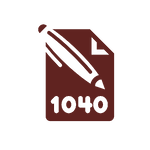Points to consider for part owners of closely held companies in preparing their income tax returns
 ‹ Back to the articles
‹ Back to the articles
 Applicable threshold amount, interest, salary basis and investor deduction are four important factors in this year’s income tax return. Here we present our advice in preparing your return.
Applicable threshold amount, interest, salary basis and investor deduction are four important factors in this year’s income tax return. Here we present our advice in preparing your return.
As part owner in a closely held company, there are a number of things to consider in preparing your income tax return. In addition to filling in form K10, part owners in closely held companies should consider the transactions, which have taken place and the benefits, which they, as well as closely related individuals, have received, from the company during the year.
Active in a closely held company – form K10
If you are a part owner in a closely held company, where you, yourself, or a closely related individual are active, then special tax rules apply and in preparing your income tax return, you should present a K10 form. In this form, you calculate the portion of the distribution and capital gains to be taxed at 20 percent (threshold). This threshold amount is subsequently, entered into the income tax return form for reporting income from services and capital.
For those of you who do not receive a distribution or sell shares, it is also important to have an updated form K10 as the threshold amount, if it is not utilized, can be saved for future years.
The threshold amount is to be calculated for the individual owning the shares in the company at the beginning of 2015. That portion of the distribution or capital gains in excess of the threshold amount is taxed up to a certain level as income from services.
The threshold amount can be calculated in two ways, applying either the major rule or the simplification rule.
The simplification rule involves no special requirements. For income year 2015, this standard amount is SEK 156,475 allocated according to the portion of the company owned. For those of you owning a number of companies, the simplification rule can only be applied in one of the companies.
In order to calculate the threshold amount according to the major rule, there is a requirement that you own at least four percent of the company’s capital and that you or closely related individuals have taken out a certain minimum salary. If these requirements are met, one can count on the threshold amount – simply stated – as comprising fifty percent of the company’s or subsidiary’s gross cash salaries in the previous year. To this, you can also add approximately ten percent of the cost of the participations. For those of you having high salary costs and who meet the requirements for applying the calculation according to the major rule, this treatment can result in a significantly different tax amount compared with applying the simplification rule.
Non-qualified shares – form K12
If you are a shareholder in a closely held company where neither yourself nor any closely related individual have been active to any significant degree during the income year or during the last five years, then, the special tax rules on calculating the threshold do not apply. Instead, you are to file form K12 if you have sold participations or received a distribution from the company. However, pay attention to the practice regarding same or similar operations implying that a formally passive company can be seen to be active based on such practice. Check this with your tax advisor!
Have you lent out funds – you can charge interest
If you have lent out funds to a closely held company, in which you own shares, you also have the possibility of charging a market-based interest on the loan. The interest is treated exactly as other interest and is reported for taxation as income from capital. This interest amount is most often not pre-printed in the tax return so it is important to remember to fill in this amount, and it is also important to remember to prepare loan documents.
If you have rented a portion of your residence to the company
You can rent out a portion of your private residence to your closely held company. However, there are a number of things to consider in this context.
The rental income, which the closely held company pays, is taxable income from capital and is reported under point 7.3 in your main income tax return form. However, in order to report this income there is a requirement, amongst other things, that a written rental agreement be prepared in which there is a clear indication and description of the actual space in the residence to be disposed of by the company. In addition, the rent must be market-based.
If you, or a closely related individual, are employed in the company, you cannot report the usual standard deduction of SEK 40,000.
Access to a company’s boat or holiday home
For part owners in closely held companies, a strict view of taxation is applied as regards on access to the company’s property, which can be used for private consumption, for example, boats or holiday homes.
The starting point is that the actual right of access to the company’s property should be taxed as income from services. This implies that taxation applies to part owners having the possibility to use, for example, the company’s boat regardless of whether the boat is actually used. An exception is made for the period of time during which the asset has not been available, for example, if it has been rented out to another party.
Taxation is based on the equivalent market value of the benefit, as income from services, and is reported under point 1.1 in the income tax return. If the closely held company handles this benefit correctly, then it is also to be taken up in the statement of earnings and deductions.
Salaries to children or wife/husband
If you are a company manager and have a wife/husband employed in the company, your wife/husband is taxed only for the salary that is seen to be market-based. If the wife/husband is to receive a higher level of salary than that which is market-based, you are taxed as company manager for the difference.
In addition, if you have employed your own children who are less than 16, then those of you having the highest salary from the company should be taxed for this compensation. If the child is more than 16, those of you having the highest salary should, instead, report any possible compensation in excess of market-based salary.
The rules also apply to cohabitants who have previously been married or who have or had had children together.
The possibility to deduct for investments has been limited
The investors’ deduction was introduced at the end of 2013 and implies that deduction, based can be made on certain premises for investments in smaller companies in conjunction with the establishment of the company or a new share issue. The deduction is made in the class of income capital and is equivalent to fifty percent of the payment made for the participations, with a maximum limit of SEK 650,000 per year for this deduction.
From 1 January 2016, the possibilities to undertake investor deductions have been limited. Amongst other things, the deduction will not be able to be made if you, or a closely related individual, has owned shares in the company in which you are acquiring participations. More information on the investors’ deduction can be found on Tax matters.
Important considerations – 3:12 committee’s final run up
The 3:12 committee is to present their final report on the manner in which taxation rules for distributions and capital gains in closely held companies are to be changed in the future on 1 September 2016. Against the background of the committee’s directive, it is probable that a proposal will be presented implying tax increases for owners in closely held companies. This does not impact the year’s income tax return but is good to keep in mind for future consideration.
Amongst other things, the committee is to review the calculation of the threshold amount and of taxation of capital gains and distributions within the threshold amount. This implies that today’s 20 percent tax within the threshold amount may be increased. The committee is also to review the manner in which saved distribution capacity is to be treated in the future. Read more about the 3:12 committee’s run up on Tax matters.
Andreas Stranne and Filip Engström
.png?width=210&name=TM_Andreas_Stranne%20(1).png)
Andreas Stranne
Andreas Stranne jobbar på PwC:s kontor i Göteborg som skatterådgivare för entreprenörer och deras bolag.
Kontakt:
Tel: 010-213 14 47,
andreas.stranne@pwc.com

Leave a comment